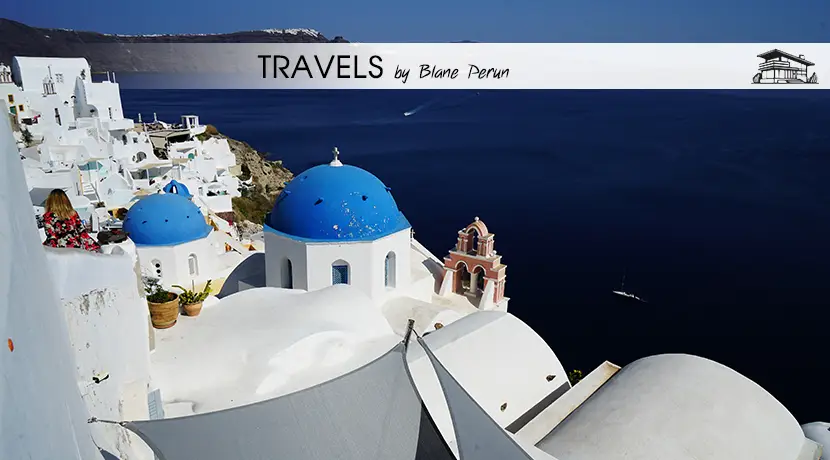Santorini Architecture & Interior Design
Embracing the Aegean Charm: Santorini Greece Architecture & Design
Nestled in the heart of the Aegean Sea, the island of Santorini, with its distinctive architecture and design, stands as a beacon of beauty and innovation. The unique architectural landscape of Santorini Greece Architecture & Design is not just a product of its volcanic origins but also a testament to the ingenuity of its inhabitants. From the iconic blue-domed churches to the pristine whitewashed houses clinging to the cliffs, every structure tells a story of adaptation, resilience, and artistry. This article delves into the heart of Santorini’s architectural identity, exploring its origins, influences, and the elements that make it a subject of fascination and study around the globe.

Historical Foundations and Modern Inspirations
The Legacy of Cycladic Architecture
Santorini’s architectural style is deeply rooted in the Cycladic tradition, characterized by its minimalist aesthetic and functional design. The Cycladic influence is evident in the clean lines, cubic forms, and flat roofs of Santorini’s buildings, designed to withstand the harsh Aegean winds and intense sunlight. The use of local volcanic materials not only adds a unique textural element but also provides natural insulation, a clever adaptation to the island’s climatic conditions.
Contemporary Santorini and Global Influence
In recent years, Santorini Greece Architecture & Design has seen a surge in modern interpretations of traditional elements. Architects and designers from around the world are drawn to Santorini, seeking to infuse contemporary spaces with the island’s timeless elegance. This blend of old and new has given rise to stunning boutique hotels, luxury villas, and art spaces that maintain the island’s architectural integrity while pushing the boundaries of design and comfort.
The Palette of Santorini: Color and Texture
The Iconic Blue and White
Santorini’s color scheme is as iconic as its architecture. The stark white buildings, accented with vibrant blue domes and doors, are not just aesthetically pleasing but also serve practical purposes. The white lime plaster reflects sunlight, keeping the interiors cool, while the blue represents the sky and sea, blending the structures harmoniously with their surroundings.
Embracing Natural Materials
The textures of Santorini Greece Architecture & Design are a homage to the island’s volcanic landscape. The use of pumice, ash, and volcanic rock in construction not only creates a unique aesthetic but also provides structural benefits. These materials are lightweight, durable, and have excellent insulating properties, making them ideal for the local climate.
Living Spaces and Public Areas
The Evolution of Cave Houses
Santorini’s cave houses, or “yposkafa,” are a distinctive feature of its architectural landscape. Carved into the cliffs, these homes offer natural insulation and protection from the elements. Originally the abode of sailors and fishermen, modern cave houses have been transformed into luxurious dwellings and boutique accommodations, offering a unique blend of history and comfort.
The Social Heart: Squares and Churches
Public spaces and churches play a central role in the social and architectural fabric of Santorini. The main squares, often flanked by majestic churches, serve as gathering points for the community and venues for festivals and ceremonies. The architecture of these spaces reflects the communal spirit of the island, with open, inviting layouts that encourage social interaction and celebration.
In conclusion, Santorini Greece Architecture & Design is a harmonious blend of history, culture, and innovation. Its distinctive style, characterized by minimalist forms, earthy textures, and a captivating color palette, continues to inspire and captivate visitors and designers alike. As Santorini evolves, its architecture remains a testament to the island’s ability to adapt and thrive, making it a perennial subject of interest in the realms of design and architecture.

FAQs on Santorini Greece Architecture & Design
- What makes the architecture in Santorini unique?
Santorini’s architecture is unique due to its adaptation to the island’s volcanic landscape and climate. The distinctive cubic houses, blue-domed churches, and cave dwellings are designed for insulation, light reflection, and protection against seismic activities. This blend of functionality and aesthetics, rooted in Cycladic tradition, sets Santorini’s architecture apart.
- How do the colors used in Santorini’s buildings contribute to its architectural design?
The iconic white and blue colors of Santorini’s buildings are not only visually striking but also serve practical purposes. The white lime plaster used on the exteriors reflects the intense sunlight, significantly reducing indoor temperatures during hot summers. The blue accents symbolize the sky and sea, creating a harmonious connection with the island’s natural surroundings.
- What is the significance of cave houses in Santorini?
Cave houses, or “yposkafa,” are integral to Santorini’s architectural heritage. Originally utilitarian structures for fishermen and sailors, these dwellings are carved into the volcanic cliffs, providing natural insulation and stability.





